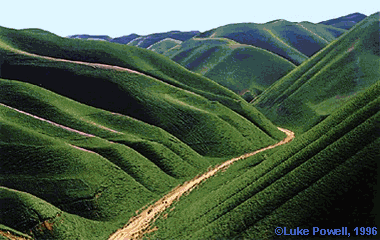|

          
|
In 1977 the population of Afghanistan was
calculated at 17.4 million, but 22 years of war - from the invasion of Soviet forces in 1979 through the jihad (holy war)
and civil conflicts of the mid 1990s to the intervention that ousted the Taliban in late 2001 - has left millions displaced.
The estimated population in 2003 was 26.9 million (AIMS). In the 1980s the Afghans were the largest group of refugees in the
world at 6,000,000 people, about one third of the population. However, the situation is improving, land is gradually being
cleared of land mines and can be cultivated again, the infrastructure is being rebuilt, and the people are returning to their
homeland. According to the Bonn Agreement of 2001 a census must be carried out, but with such a large number of internally
displaced people, refugees who haven’t yet returned and the difficulty in some regions of ascertaining accurately the
number of women in a household, this will be a monumental task. The lack of demographic data is an ongoing hindrance to research,
planning and the development of an electoral process.
The largest ethnic groups are the Pashtuns (43%) followed by the Tajiks (29%). The Pashtuns have retained political power with great military skill; their traditional code of behaviour, the Pashtunwali, includes rules for mediation, retaliation (blood revenge) and hospitality. The Tajiks have traditionally been known as ‘men of the pen’, working mainly in government administration or as agriculturalists and traders. Other ethnic groups include the Uzbeks, Nuristanis and Hazara (7% each) and a number of minor ethnic communities such as the Aimaks, the Turkmen and the Baluch (Groetzbach estimates, 1990). Average life expectancy is currently 46 years. The capital city of Kabul is home to an estimated population of 1,500,000 and is the centre of political power, although the government maintains only a tenuous control of the outlying districts. Afghanistan’s other major cities are Kandahar (225,500) in the south, an important business centre dominated by ethnic Pashtuns; Herat (177,300) in the west, a commercial centre and strategic gateway to Iran dominated by ethnic Tajiks; and Mazar e Sharif (130,600) in the north, a major industrial town with long standing links to the former Soviet states, also dominated by ethnic Tajiks. Other smaller towns include Jalalabad in the east, with a Pashtun majority; Charikar just north of Kabul, the hub of road links over the Hindu Kush, which is populated by a variety of ethnicities; and in the north Uzbek-dominated Andkhui and Tajik-dominated Kunduz, Faizabad and Baghlan. During the long years of war some 150,000 Afghans migrated permanently to other countries, including the United States, Australia, and various parts of Europe. The IOM (International Organisation for Migration) has been instrumental in supporting qualified, overseas Afghans to return for six month periods to assist their counterparts in many aspects of rebuilding the skills and infrastructure of the country. |
|
|||||||||||||||||||||||||||||||||
|
[ Go to Top ]
. 
|
|||||||||||||||||||||||||||||||||||






